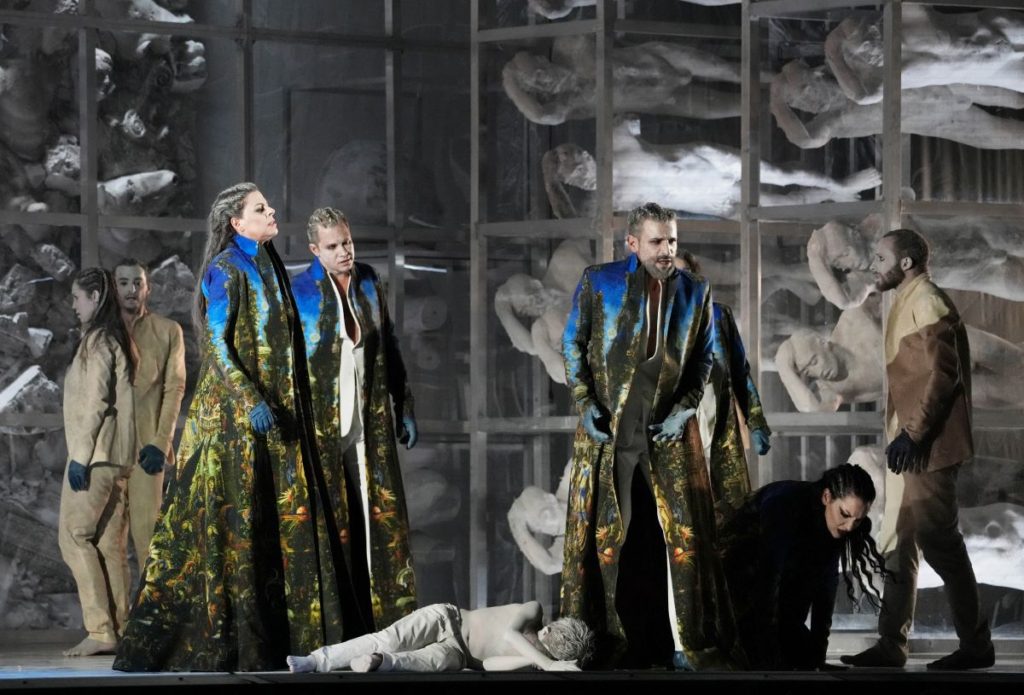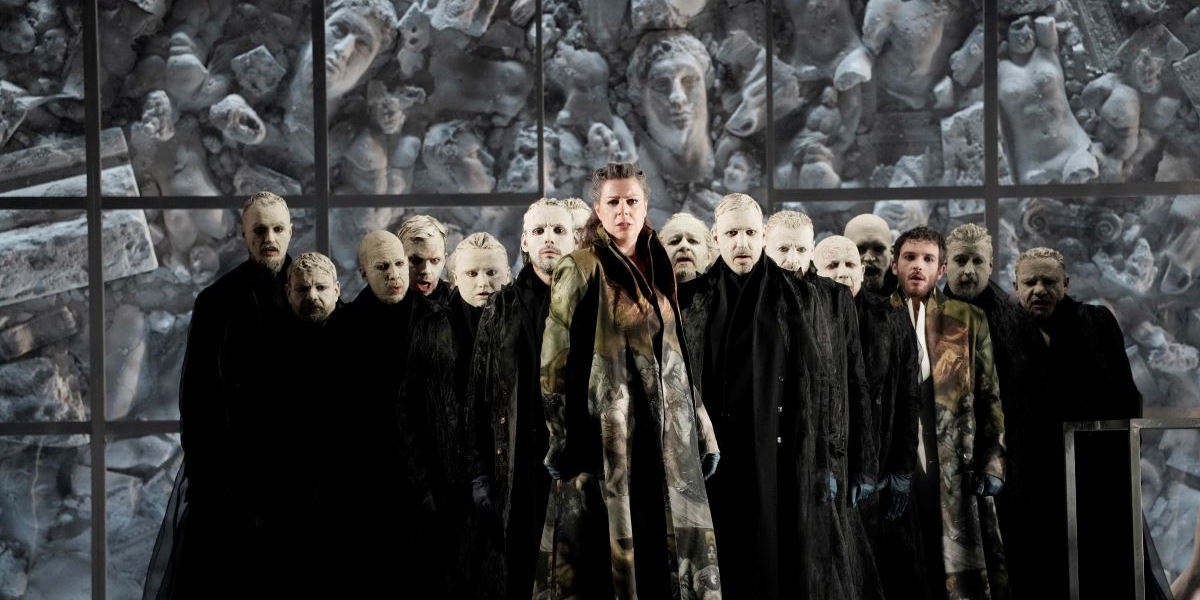Rossini had under a month to compose Eduardo. Eduardo was a ‘centone’(patchwork) opera, as 19/26 numbers were ‘borrowed’ from earlier operas -in particular Adelaide di Borgogna, Ricciardo e Zoraide and Ermione. Ironically, none had much success, but Eduardo e Cristina was such a hit, that the first performance took over six hours due to the multiple encores.
With Eduardo, Rossini Opera Festival (ROF) has now performed all Rossin’s 39 operas, considered so important that it was shown live on Rai 5.
The story: Russia invaded Sweden; Eduardo, the Swedish army commander defeated them. King Carlo’s daughter, Cristina, secretly married to Eduardo, has a young son, Gustavo. Carlo announces the marriage of Cristina to Scottish Prince Giacomo. Cristina admits Gustavo is her son; Eduardo confirms he is the father. Furious, Carlo sends all three to prison with a death sentence. Giacomo offers to marry Cristina and recognise Gustavo provided Eduardo is executed; Cristina refuses. Eduardo mercifully frees the Russian prisoners, who mount a surprise attack. Eduardo, freed from prison by loyal Captain Atlei, defeats them. Eduardo offers his life in exchange for those of Cristina and Gustavo; Carlo forgives them and blesses the marriage.
This is a Marmite production – love it or hate it. As a singer, I didn’t love it. I know how difficult the music is to sing, so anything which takes attention away from the singer, is distracting and annoying. Eduardo was composed in the age of the supremacy of the singer, which continued until Wagner broke away from that with his Gesamtkunstwerk ideas 30 years later. However, the music and the singing are fantastic.
The set reminds me of the Sedlec Bone Ossuary near Prague, created with skeleton bones. Director Poda staged the production ‘as if it were an exhibition of contemporary art: the background… a living representation of a world made up of tension and war…’ – his Gesamtkunstwerk version.
The set is a contemporary living art installation; cages with dead body exhibits frame the stage. The central stage is mainly empty allowing mime dancers, and soloists weaving in and out of steel wheeled cages.
The dancers and chorus are sprayed with clay. The dancers, naked apart from a string, (no pasta for them!), mostly frame the soloists with endless grimaces, – very creepy. The soloists wear bright costumes and gloves, to stand out amidst the clay.
During the 9-minute overture, two virtually naked men fight in slow motion (Sweden v Russia?) For Eduardo’s victory entry, there is unusual choreography for the dancers whilst the chorus are stuck at the back singing ‘serti intrecciar le vergine’.
The choreography veers between great, for example the Act I finale where the dancers crumple, drop and pick themselves up to a crotchet, annoying when the dancers attach to the soloists mimicking their gestures, and grotesquely meaningless. Do we really need their expressions, when the soloists express everything better with their singing, acting and music?
The singers and the music are terrific. The main soloists, with huge technically difficult scenas to sing, do a great job ignoring the dancers grimacing around them.
Star Italian mezzo Daniella Barcellona as Eduardo, who, with Cecilia Bartoli are the top travesty Rossini mezzos singing today. She enters all guns blazing, gives an commanding, emotionally powerful performance, with perfect coloratura; both big arias are show-stoppers. Her voice is warm and voluptuous with a large, versatile vocal palette; the coloratura and interesting variations are perfect.

Italian soprano Anastasia Bartoli (daughter of Cecilia Gasdia) has striking looks, magnificent voice, stage presence and long black fingernails! She usually sings big Verdi roles: Cristina is her debut ROF role). She expresses intense emotions of fury, exciting vocal leaps, tenderness, superb coloratura and gorgeous top notes. Cristina’s ‘arresta il colpo’ is a tour de force demonstrating intense emotions, vocal leaps, tenderness, superb coloratura, gorgeous top notes and stunning technique.
Their duets such as ‘in quei’ soave sguardo’ are perfectly balanced, both terrific singers and actors.
Sicialian tenor Eneo Scala as Carlo – ‘d’esempio all’alma infide’ has baritonal quality when needed, ringing top notes and agile coloratura, verging from fatherly emotion, frustration and finally unhinged.
Tenor Matteo Roma as loyal Atlei and Russian bass Grigory Shkarupa as calculating Giacomo both demonstrated good instruments in their arias.
Italian conductor Jader Bignamini’s powerful, dramatic interpretation ensured the success of the show.
A TWIST? The end has Eduardo, Cristina and Gustavo happily reunited stage right in white lighting whilst in black lighting Carlo, alone, hugs Gustavo’s double to death. Can we choose the ending? Is it happy families or unhinged Carlo killing everyone?
This is an unusually different production, worth watching on YouTube or Rai.

